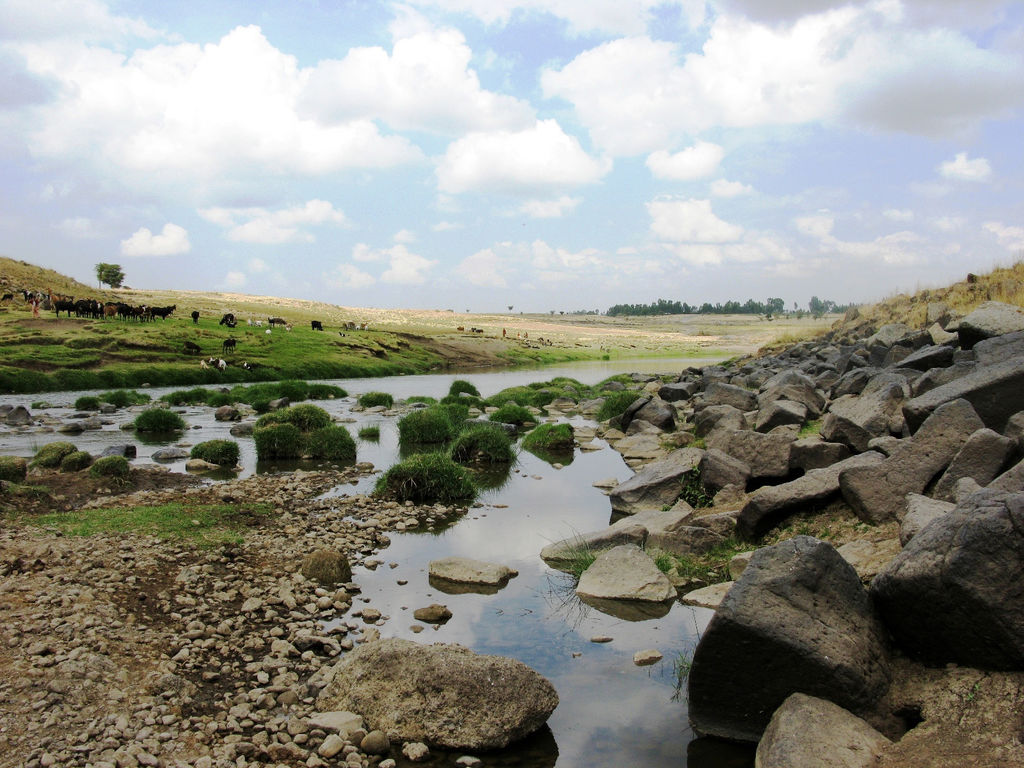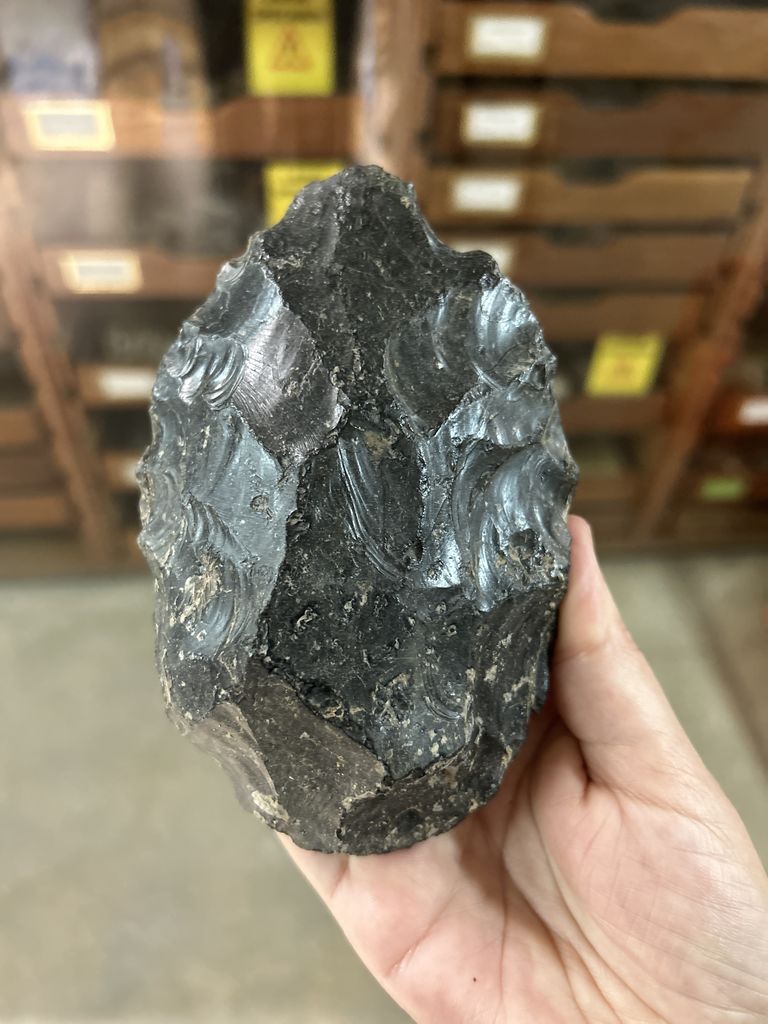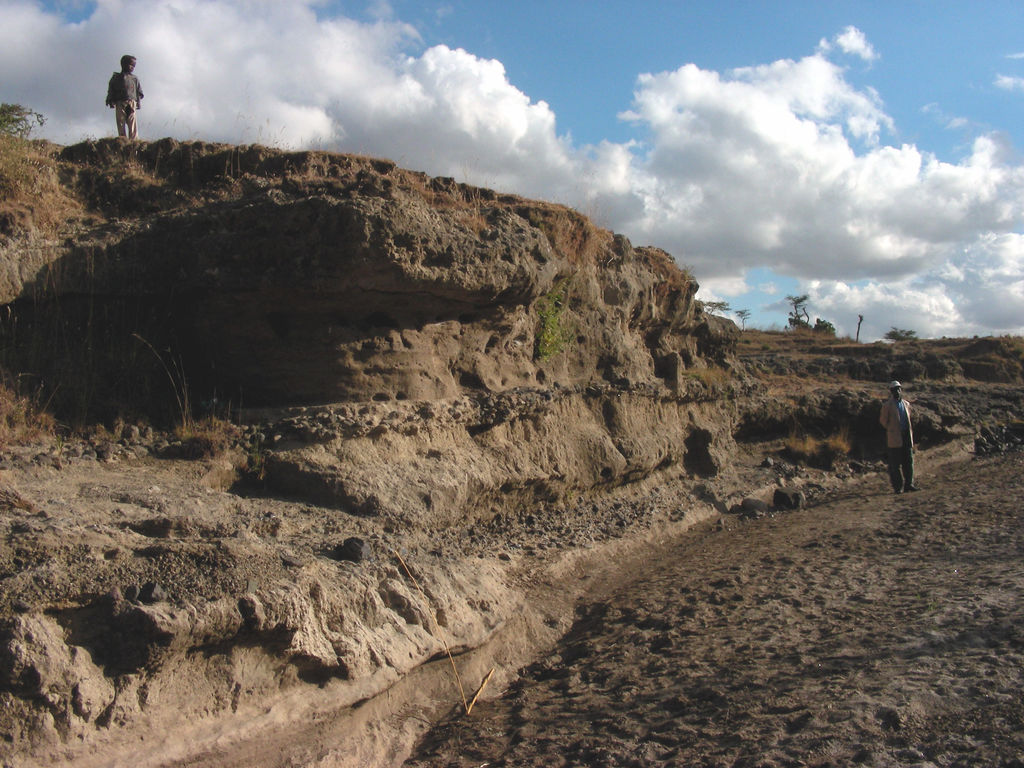
At Melka Kunture (Ethiopia), the oldest workshop for the production of obsidian bifaces dating back more than 1.2 million years ago
Located about 50 km south of Addis Ababa, Melka Kunture is an archaeological area that stretches across the Ethiopian plateau at an altitude of about 2,000 m. It is a vast agglomeration of archaeological deposits dating from between 2,000,000 and 5,000 years ago that, in terms of its size, its long cultural sequence and the multiplicity and variety of archaeological situations present in its various phases, is an extraordinary complex, comparable only to the Olduvai Gorge in Tanzania. Melka Kunture, however, clearly differs from the savannah environment, not only because of its cool and rainy climate but also because of its different flora and fauna, representing a uniqueness of its kind.
The newly published study, carried out by a group of researchers led by Margherita Mussi, a lecturer at the Department of Ancient World Studies until 2019, shows that at Melka Kunture, and in particular at the Simbiro site, a sort of small cliff of about 5 m in height has been identified, comprising five clearly visible archaeological levels of the Acheulean dating back to more than 1,200,000 years ago; one of them, level C, presents an impressive quantity of obsidian bifaces and flakes derived from their production.
Detailed analysis of the obsidian bifaces reveals them to be extremely standardised and therefore made by expert hands that produced large chips, managing to retouch them to obtain constant and repeated shapes, despite the fragility of obsidian, a volcanic glass. "The fact that there were no other types of tools at Simbiro, with the exception of these high-quality obsidian tools, leads us to believe that this was a specialised production site," says archaeologist Margherita Mussi, excavation director since 2011. "In other words, this is a production workshop, the oldest ever known, since those known so far date back no more than 300,000 years".
The spatiotemporal aspects of the earliest stages of evolution were evaluated to carry out the study. Various research trails allow us to accurately reconstruct a flat, tree-rich environment with a watercourse that seasonally overflowed and changed course, accumulating and then eroding deposits of various types. One of these, an accumulation of large obsidian pebbles, was noticed by hominids, who used it on several occasions to produce obsidian bifaces. In general, the evidence we have for the Lower Pleistocene suggests a poorly differentiated pattern of habitation, in which all day-to-day activities took place, from the production of tools to their use for all kinds of needs; at Simbiro, however, we only have production of very standardised bifaces that were then moved elsewhere for use. The area was seasonally invaded by water, and it was, therefore, necessary to plan the time of year to come, planning never before seen in this phase of the Pleistocene.
Of great importance is how the hominids achieved these excellent results. At Melka Kunture, obsidian had been known to be chipped for a long time, since as early as 2,000,000 years ago, the Olduvaian was predominantly on obsidian, but these were fragments obtained rather easily from small pebbles of a few centimetres; then, from 1,950,000 years ago, large fragments and a few bifaces were also produced, albeit rarely, but rather using other volcanic stones such as basalt.
"These findings highlight a fundamental stage in the development of human intelligence: innovation, which is linked to creativity," continues Margherita Mussi. "It is the first example of the development of 'parallel thinking', which means bringing together knowledge and technical skills previously acquired in other productions, i.e. small obsidian chips on one side, basalt bifaces on the other, to obtain a new product, i.e. standardised bifaces on large obsidian chips. "Melka Kunture", says Mussi, "provides not only information on the development of human intelligence but also demonstrates the need not to underestimate, with easy generalisations, the capabilities of the hominids of the Lower Pleistocene, who did more than passively adapt to the environment".
The "Italian-Spanish Archaeological Mission to Melka Kunture and Balchit" is directed by Margherita Mussi. In Simbiro, research funding was provided by the "Grandi Scavi di Ateneo", granted by Sapienza until 2018, by the Ministry of Foreign Affairs and International Cooperation, and by Spanish organisations, in particular the Fundación Palarq.
References:
A surge in obsidian exploitation more than 1.2 million years ago at Simbiro III (Melka Kunture, Upper Awash, Ethiopia - Margherita Mussi, Eduardo Mendez-Quintas, Doris Barboni et al - Nature Ecology and Evolution (2023) https://doi.org/10.1038/s41559-022-01970-1
Further Information
Margherita Mussi
Department of Ancient World Studies
margherita.mussi@fondazione.uniroma1.it





